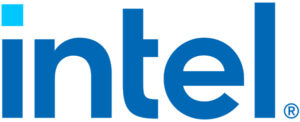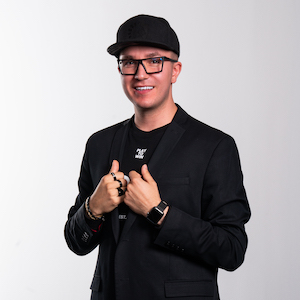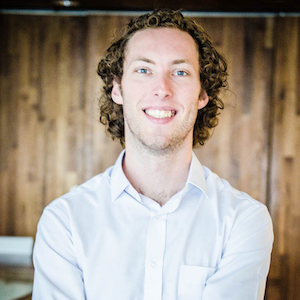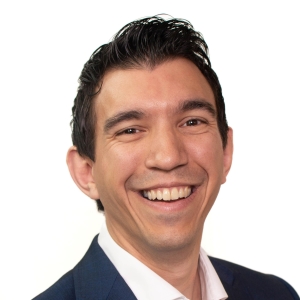Danielle Applestone: In a corner of a stadium, a single spotlight bounces off a gleaming trophy, but for the 50,000 fans in attendance, they’re laser focused on a small group of elite competitors. And across the world, tens of millions of fans follow every play live. They personify the dreams of hundreds of millions of players, kids and adults. They are the rarefied few and today a worldwide title is on the line. Despite their youth, most have clocked in their 10,000 hours and then some. Their ability to see, to coordinate, to react, defies belief. Today, legends will be made, others reaffirmed. This is not boxing nor MMA. It’s not the World Cup. This is eSports.
Speaker 2: The new world champions.
Danielle Applestone: It’s here, it’s global and it’s growing incredibly fast. It’s where hundreds of millions of players and fans from every part of the planet engage in the battle for supremacy in virtual worlds created for Counter Strike, League of Legends, Call of Duty and StarCraft II. Top players, few of them old enough to remember the 20th century, are rockstars. Some making seven, even eight figures a year before endorsements. Where do these elite esports warriors come from? And more to the point, how do they stay on top? You’re about to go inside the world’s foremost esports training facility and experience the technology, the organization and the people behind an esports dynasty.
Danielle Applestone: I’m Danielle Applestone, engineer and entrepreneur, with fond childhood memories of playing video games with my dad. And although I’m not a pro gamer, I’m really good at Tetris. This is Technology Powers X. In this episode, technology powers a gaming phenomenon.
Danielle Applestone: Outsiders to the immense intricate world of esports might not light up at the mention of the Netherland city of Utrecht. To those who know though, including the world’s half billion esports fans, it’s a European technology hub and the birthplace of Team Liquid, one of the most formidable, dominating and at 20 years of age, longest running esports powerhouses.
Mike Milanov: Team Liquid is the sport team name, the organization. Very similar to the Golden State Warriors or FC Barcelona or the Yankees or whatever organization you follow.
Danielle Applestone: Mike Milanov is chief business development officer for Team Liquid.
Mike Milanov: Team Liquid is the sports organization, but what makes it a little bit different than traditional sports is Team Liquid does not have to be bound to a city. Imagine if your favorite NBA brand could also be part of the MLB or NFL or NHL and with the same audience platform, with the same brand, it’s not city based. And so team liquid across 18 different sports has over a 100 professional athletes and we focus from a fan acquisition perspective on global. We have Chinese fans and we have fans from Australia and Brazil and Canada and all of the countries in Europe and CIS and all of the different sports are followed differently in various parts of the world. And so that’s Team Liquid and that’s the industry.
Danielle Applestone: The events of 2020 that cut a swath through so many sectors have merely stunted the growth of esports, who’s meteoric rise was marked by stadiums packed with fans lucky enough to get some of the hottest tickets in all of sport.
Mike Milanov: The best way to imagine these stages when I talk about them, by the way, is there will be 25,000 tickets sold in nine minutes. Barclays Center was sold out in 12 minutes. Madison Square Garden was sold out. The Mercedes-Benz arena for League of Legends, the Olympic stadium that they had built, was sold out. I think it was 55,000 seats.
Danielle Applestone: Forbes Magazine reports that in 2019, back when people crowded theaters, the theatrical motion picture business took in $42.5 billion worldwide. The worldwide games market made $150 billion. In all respects, sales of electronic games outpaced those of the film and music industries combined, which helps frame the magnitude of an organization such as Team Liquid, whose success is driven in no small part by esports viewership. Bo Kryne is director of fan management at Team Liquid.
Bo Kryne: If you look at the last year on YouTube alone, we had eight million views on YouTube, but our biggest platform is Twitch where we had 95 million hours watched on Twitch, which is an insane amount. That means on average 95 million people would have watched one hour or you can do the math.
Danielle Applestone: To understand Team Liquid is to first understand what sets esports apart. In the half century since the first Pong consoles dotted America’s landscape, esports has emerged as a distinct genus of digital games. Mike Milanov.
Mike Milanov: What makes a game an esport is that there are a few requirements that it needs to have. Number one, a game must be competitive and it must have organized competitions. It can’t just be casual like Candy Crush or a single player game that you play like Final Fantasy at home. Number two, there has to be contracts and professional athletes and players being compensated to play under a organization name. There are big prize pools in the tournaments that they compete in. In any given year, Team Liquid across all of its sports can take home $50 to $60 million in a calendar year, which is quite crazy when you think about it. And then third, it needs to be very competitive to view or you have to experience that same adrenaline and sports fanaticism that you do when watching the last portion of the Super Bowl or the Dodgers about to hit a home run.
Danielle Applestone: As a boy of four living in Scranton, Pennsylvania, Jonathan Jablonowski was persuaded by his brother to play Counter Strike 1.5. Before long, he was playing in amateur leagues and somewhere during those countless hours of play, he made a discovery. He was good, really good.
Jonathan Jablonowski: The first time that I thought that I could play video games professionally was when I got the initial offer to join Team Liquid CS:GO team. Before that I was playing StarCraft for a couple years and I thought that I would be good at that game and my goal was to be a professional at StarCraft II, but it didn’t end up working out. And then I started playing CS:GO for a little bit in 2014. And then by the end of the year, I got into another professional team before that, but the salary wasn’t anything to live off of and I was still in high school. But when I got the offer to join Team Liquid, the salary became a little bit more than I had before. A little bit of a better part-time job.
Danielle Applestone: Today, he’s world famous, a member of the esports elite known by the gaming handle EliGE. But the road to esports greatness had the same bumps that beset young athletes who dream of playing any major league sport. He’d been a high school valedictorian and probably could have done just about anything he put his mind to, but his passion was in gaming. His mom really wanted him to go to college so he tried to do both.
Jonathan Jablonowski: We got to a level where we started qualifying for a lot of tournaments. And if you qualify for tournaments, of course you need to travel to all the different LANS and that means that you can’t be there for school and I still had to do the homework that was there. And when I was in Pennsylvania and I was going to my classes and stuff like that, it was a really strenuous schedule for me. I remember that I just had to wake up at 8:00 AM for one of my classes on the weekdays. I would wake up, go to my class for an hour, go back. I would take a nap and then I’d get lunch so I can get some food. And then I go to another class.
Jonathan Jablonowski: I would do my homework in between all of that time. And then when I’d get back, I would try to make sure that I’m just doing the homework that already got assigned to me. And then I’d have a practice at 5:00 or 6:00. And I would try to make sure that I get something to eat before that practice. Have that practice and that would take about four to five hours still. And after that, I’m just trying to get the studying that I can, the long term projects that are being assigned to me. And I would just rinse and repeat that same type of schedule every single day for all of my college days.
Danielle Applestone: The gaming versus college battle began and ended. Gaming won and EliGE soon took his place among the very best at Team Liquid. His mom couldn’t be prouder.
Danielle Applestone: As bright new esports players emerged, the industry grew around them. Finding and growing esports superstars became big business, which brings us back to Utrecht where as Mike Milanov explains, makeshift practice spaces have given way to dedicated, state of the art training facilities.
Mike Milanov: The European training facility that we just opened in partnership with Alienware and Dell Technologies, it is called the Alienware Training Facility.
Danielle Applestone: This is the sort of building written about in design magazines, made to draw gasps from visitors. The sort of building you’d expect to see in a Silicon Valley campus.
Mike Milanov: When you go in, you’re hit with a huge Dell Technology server room and a Hall of Fame to your left, which then leads into a 25 foot trophy wall in the kitchen and dining area, into a player lounge with a sustainability focused design with a green wall for optimal health and relaxation, then into the most intense training area, which are our scrim rooms. We have our Dark Side of the Moon scrim room and our Lunar Light scrim room. And what we’ve done here is we’ve really tried to pay homage to the Alienware brand. You’ll see a lot of hexagons, a lot of diagonality, a lot of black and white design, which we’ve infused with bamboo synergies and everything has been thought of, all of the technology, the wire management, it looks cool. All the surfaces are super futuristic looking. I’ve gotten on a few Zoom chats and people were like, “Oh, that’s a really cool Zoom background. Can you send me that? I want to use that in my next meeting.” And I had to say, “No, I’m actually here.”
Danielle Applestone: Part major league sports clubhouse, part tech campus, Team Liquid’s EU headquarters is purpose built to maximize competitive edge, combining lifestyle, team building and tech, especially tech, to hone the planet’s best esports competitors.
Mike Milanov: The building in and of itself is really unique as well because in addition to having the training facility on the second floor, on the first floor, there is a fitness center or a gym. And then on the third floor, we have player housing, which we have built and we have 13 individual apartments that were furnished and built to hotel room styles.
Danielle Applestone: It’s at this elite level of esports that the line separating work and play may blur a little. The world’s top players in a big stakes, high octane environment, are all too aware that thousands of gamers dream of having their job. Jonathan Jablonowski.
Jonathan Jablonowski: Well right now for how high the level is of esports, you really need to be taking it as seriously as any professional sport in my opinion. You need to have a coach that is leading the team and making sure that everyone is on track for what they should be doing. You need to have a manager that’s taking care of all the outside of game things for the team so we don’t have to worry about our schedule and there’s no big questions that we have and he’s going to be managing it all for us. And you also need a sports psychologist. And I think that’s one of the biggest differences that it’s made for at least my career, where I think that I’ve actually been able to elevate my game and elevate myself as a person individually to be able to work better with my teammates.
Danielle Applestone: No less vital are the devices and infrastructure that power Team Liquid. A sport that requires 300 to 400 player actions per minute leaves no margin for latency or lag. Bo Kryne.
Bo Kryne: If you now would get a team from America against a team from Europe, then if you play it on the European server, the team from America will simply never, ever win. Because a few more milliseconds delay is too much. To kind of help us set up best we can, we have two fully redundant fiber optic lines of one millisecond, 10 gigabyte per second data streams connected into our Dell EMC PowerEdge. If one of those lines falters then automatically, switch to the other line so that we have uninterrupted and completely reliable gaming throughout.
Danielle Applestone: And it’s not just the players getting the cream of the crop, developers, graphics teams, support staff, everyone is working with the best.
Bo Kryne: The most important thing to all those folks is reliability, which we talked about and having a good set up with a strong computer and a couple of monitors. All of the staff is equipped with Alienware, but the graphics and production teams they have Alienware R10s. I think in total we have 75 Aurora desktops, 140 esports monitors. Most desktops have actually have two monitors and 84 sets of Alienware peripherals from your mouse and keyboard to a headset.
Danielle Applestone: Jonathan Jablonowski learned the hard way, the value of using the best peripherals and hardware. It was in London, his first big tournament with the team. He was confident and excited and then…
Jonathan Jablonowski: When I got there, the monitors felt really off to me. There was very noticeable input lag where if I would swipe my mouse, then it would feel that it’s behind. I’d swipe it to the left and then what would actually happen on my screen would happen a millisecond and a half too late and you can really feel it when there’s types of input lag on the monitor. And it really threw me off my game so it’s just in your head the whole entire time. And it really affected me that game, especially because it was my first big LAN and I don’t think that players should have to worry about that type of stuff. And thankfully in 2020 we do have the best type of equipment available to us.
Danielle Applestone: That’s a serious responsibility. In a world where an nth of a second can turn a win to a loss, the task of equipping Team Liquid with world class server and networking infrastructure went to Dell Technologies. Chris Slotboom is a partner managed for cloud manager service providers at Dell Technologies.
Chris Slotboom: The PowerSwitch systems that Team Liquid uses is very crucial for their connectivity because sometimes you want a machine to be smart, but when you’re running a StarCraft match at 400 to 800 actions per minute, you need switches that can really double down on latency suppression.
Danielle Applestone: And that’s why Team Liquid uses Dell EMC PowerSwitch S3148P and S4128T-ON networking switches for their open networking. And for their servers…
Chris Slotboom: The PowerEdge R340 with the iDRAC 9 and Lifecycle Controller is used for their Liquipedia website development, for their DNS, for local services. And it also serves as the entry point for their custom low latency connection, which handles the 10 gigabit per second fiber lines. And the R6515 provides Team Liquid with a cyber resilient architecture. And it’s really used for the engineering and coding, like the Liquid+ loyalty program and app development. And at the heart is the R740xd, which is being used to store images, video, graphics. It could be terabytes at a time. It also allows them for a global collaboration with their other teams across the world.
Danielle Applestone: Like the coaches, the sports psychologists and even the two full-time chefs, Dell Technologies plays an important supporting role in contributing to the team’s focus.
Chris Slotboom: Using PowerEdge and PowerSwitch stable infrastructure and connections ensures that Team Liquid is able to stay with their head in the game instead of their IT systems. It gives them a competitive edge and lays the foundation to attract new talents and carry their team into the future.
Danielle Applestone: Technology is also at the heart of the fan interaction. It’s crucial to the growth of esports. Unlike other major sports, Team Liquid’s new fan loyalty program, Liquid+, provides direct two way communication between fans and their favorite players. Still, the fast evolving esports culture remains a work in progress.
Danielle Applestone: It took a long time for women and minorities to be welcomed into sports and science and business and the same is true for esports. While women and girls are fully represented among fans, they’re only just emerging among the elite esports gamers. Shelley Taniguchi is senior partnerships manager for Team Liquid. She cites a lack of encouragement for women or girls and historically underrepresented minorities to pursue STEM. She’s also aware of remarkable pioneers helping to reshape the professional esports demographic.
Shelley Taniguchi: Her name is Se-yeon Kim, her gamer name is Geguri. She’s an Overwatch League player with the Shanghai Dragons. And she was one of the first women in the Overwatch League and they have a 121 or so professional players. And she plays on a mixed team. She’s quite young, entering in the space and being one of the only female pro players in her league. And when she achieved this fame at a very young age, I know that she was publicly accused of cheating by two male competitive players. They claimed that her accuracy wasn’t humanly possible.
Shelley Taniguchi: They basically threw down a gauntlet and said, “Look, you’re using some kind of assisted technology software and we’ll quit the game if you can prove to us that you’re not, you weren’t cheating.” And so she did, she rose to the occasion. She did a stage demonstration to clear her name and she did so in such a spectacular fashion. This was broadcasted live so you can actually see this I think on YouTube or you can look this back up on Twitch, but basically she demolished them. And so both of her accusers true to their word, left the competitive scene.
Danielle Applestone: It’s encouraging to note that in such a new, fast changing sport, stereotypes have little time to take root, nor are they likely to with initiatives such as Girls Who Game from Dell Technologies. This initiative showcases and supports gaming and studies in STEM among girls. The pace is fast. Change is constant and the stakes keep getting bigger. Gamers have no choice but to keep up and no time to look over their shoulder. How will Team Liquid stay on top and continue to recruit the best talent from across the world and across genders? By leveraging a combination of the best in training, coaching and technology such is life in a sport that’s growing as fast as technology itself.
Danielle Applestone: This is Technology Powers X, an original podcast from Dell Technologies. For more information on Dell EMC PowerEdge servers, please visit delltechnologies.com/servers. For more information on Dell EMC PowerSwitch open networking, please visit delltechnologies.com/networking. And to learn more about team Liquid’s Alienware training facility in Utrecht, please visit awtf.eu. You can discover more about this episode, our speakers and to read the transcript, visit delltechnologies.com/technologypowersx. I’m Danielle Applestone. Thanks for listening.
 Dell Solutions with Intel®
Dell Solutions with Intel® Mike Milanov
Chief Business Development Officer, Team Liquid
Mike Milanov
Chief Business Development Officer, Team Liquid
 Bo Kryne
Director of Fan Management, Team Liquid
Bo Kryne
Director of Fan Management, Team Liquid
 Jonathan "EliGE" Jablonowski
Professional Counter Strike: Global Offensive Player, Team Liquid
Jonathan "EliGE" Jablonowski
Professional Counter Strike: Global Offensive Player, Team Liquid
 Shelley Taniguchi
Senior Partnerships Manager, Team Liquid
Shelley Taniguchi
Senior Partnerships Manager, Team Liquid
 Chris Slotboom
Partner Manager for Cloud Managed Service Providers, Dell Technologies
Chris Slotboom
Partner Manager for Cloud Managed Service Providers, Dell Technologies
